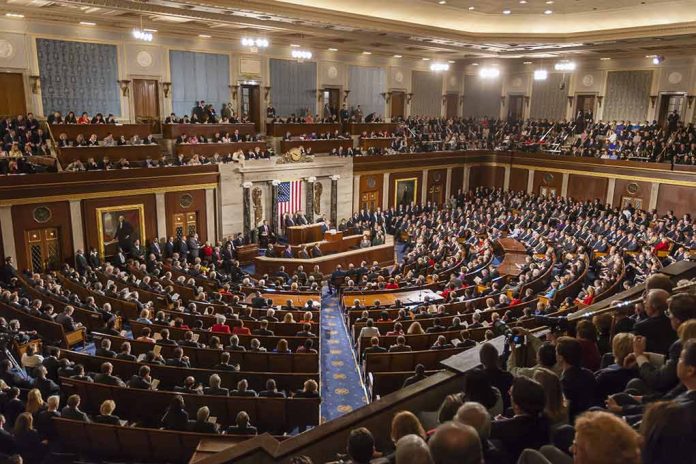
Congress is on the brink of finalizing an unprecedented $833 billion defense budget, yet uncertainty looms as the government is funded by a temporary Continuing Resolution (CR).
At a Glance
- House Armed Services Committee Vice Chairman Rob Wittman forecasts a short-term CR and an $833 billion defense budget for FY25.
- Final details on the budget process remain murky.
- A government shutdown is a potential outcome if the CR isn’t extended by October 1st.
- The Defense FY25 budget is likely to be delayed until months into the fiscal year.
The Looming $833 Billion Defense Budget
The anticipated $833 billion defense budget for Fiscal Year 2025 is front and center in Congress. House Armed Services Committee Vice Chairman Rob Wittman has highlighted the inevitability of a continuing resolution being enacted, with debates on its duration already underway. This financial extension would be vital to avoiding a government shutdown on October 1st.
Details on how Congress will manage to pass the budget remain obscure. With legislators balancing hefty defense spending while addressing other governmental needs, the complexity is emphasized by fiscal prudence amid a politically divided atmosphere. Some see the budget extension lasting until November or even early 2025, post-election periods when both chambers resume work next week.
Challenges in Defense Management
Delayed budgets cause significant disruptions in defense planning. Wittman has criticized the short-term budget extensions as detrimental. He described them as “the worst way for us to be able to manage the defense enterprise,” highlighting the uncertainty it brings to the timely funding of new programs and initiatives. This sentiment was echoed with, “I think we know we’re not going to get the seven remaining appropriations bills done between now and the end of the fiscal year.”
Army Secretary Christine Wormuth has pointed out critical needs for additional funds to sustain installation services and infrastructure vital for power projection. She remarked, “Not only are our barracks and housing in need of investment, our power projection infrastructure is in need of investment as well.” This necessity underscores the importance of timely and sufficient appropriations for defense capabilities and overall operational efficiency.
Focus on Defense Priorities and Reform
The Fiscal Year 2025 defense budget is set to refocus the Department of Defense (DoD) on maintaining combat-ready military forces essential for national security and deterrence. The proposal includes significant investments, such as increased funding for 5th and 6th generation aircraft, including the F-35, over $1.3 billion allocated for the Defense Innovation Unit, and a 4.5 percent pay raise for all military personnel. It also mandates $18 billion realigned from President Biden’s budget, cutting funds for Pentagon civilian jobs, climate change initiatives, and diversity training.
Additionally, the bill aims to enhance counter-threat capabilities, particularly against China. This comes alongside stipulations such as blocking the transfer of Guard personnel to the Space Force and removing all funding for Ukraine. “In a resource and time constrained environment, my top priority for the Fiscal Year 2025 Defense Appropriations Bill is to strengthen our military’s position against any threat presented by China,” stated California Representative Ken Calvert.
Key Lawmaker Predicts DOD Budget Topline Of $833B
Raw spending figures are enormous, focusing on beefing up innovation, modernizing equipment, and ensuring the combat readiness of military personnel. While some argue for fiscal responsibility, the ultimate objective remains unshakable: to fortify the United States’ defense capabilities in an increasingly volatile world.














